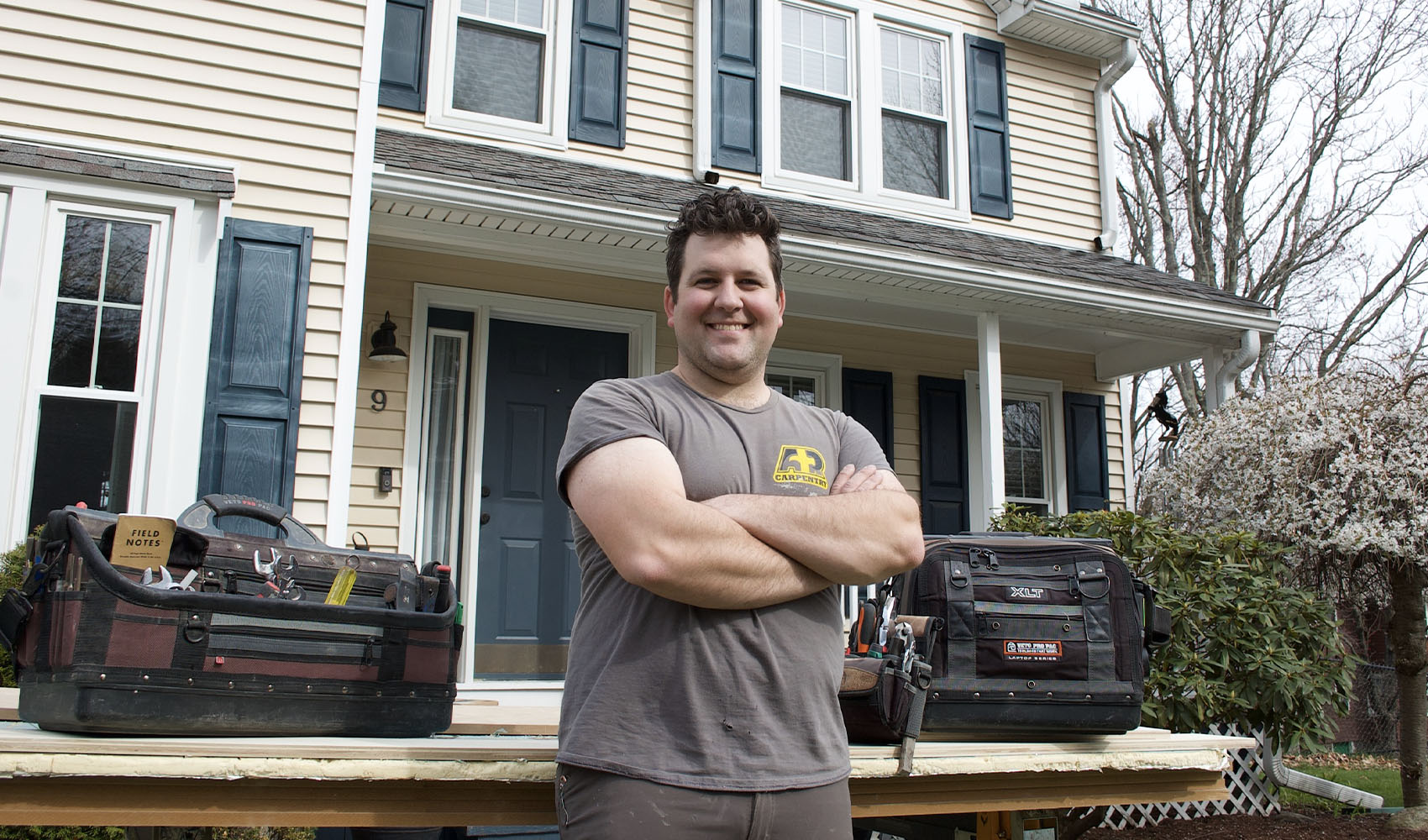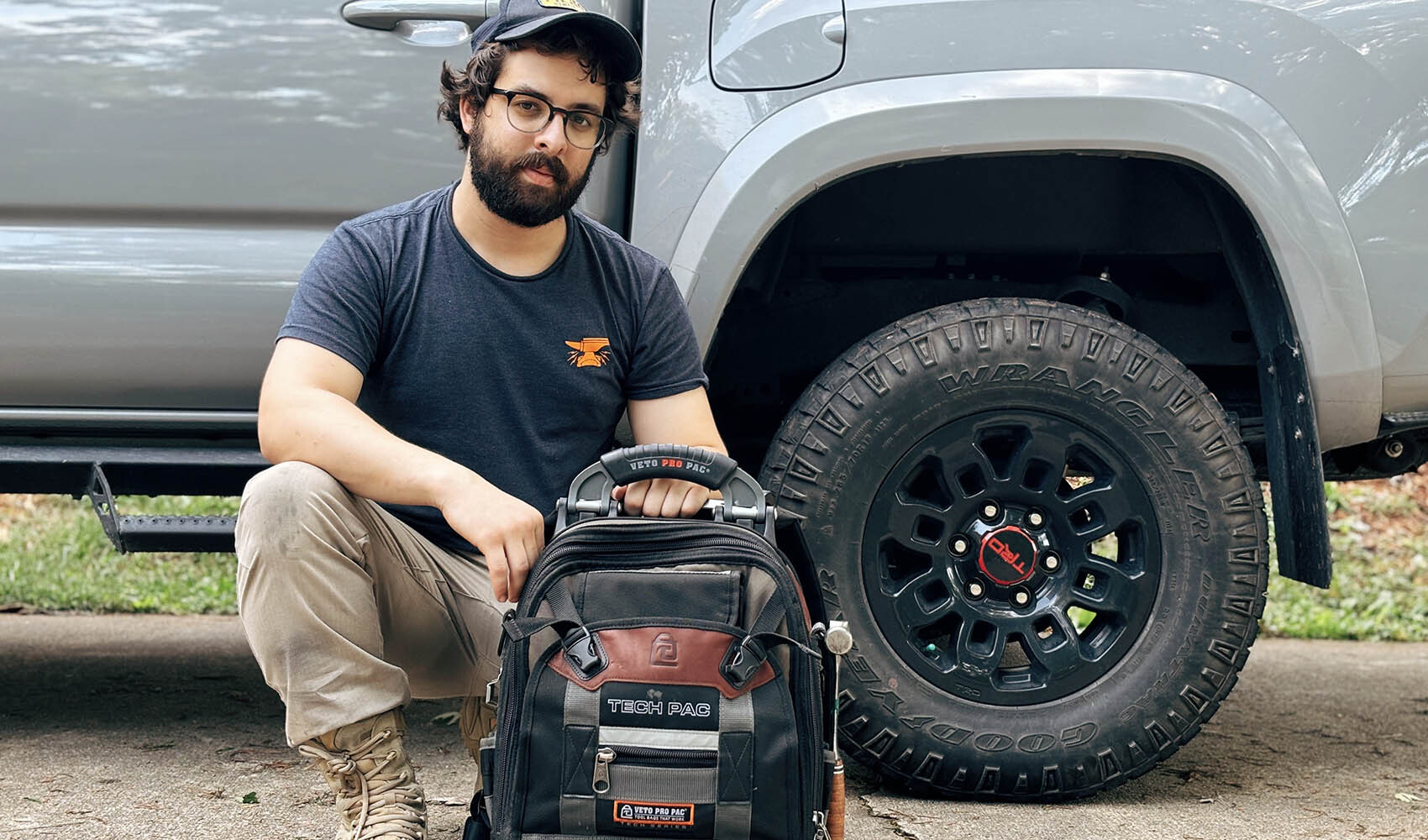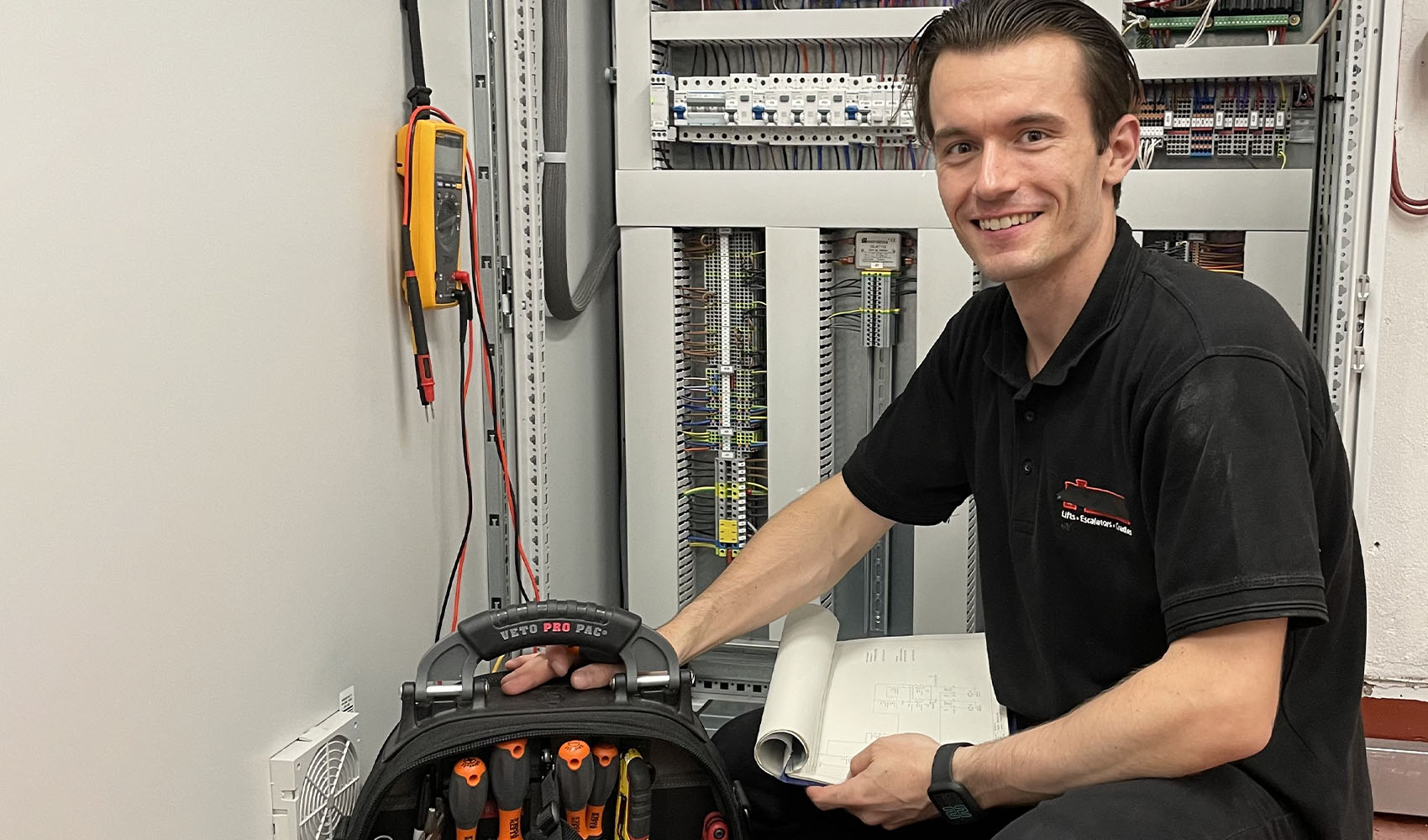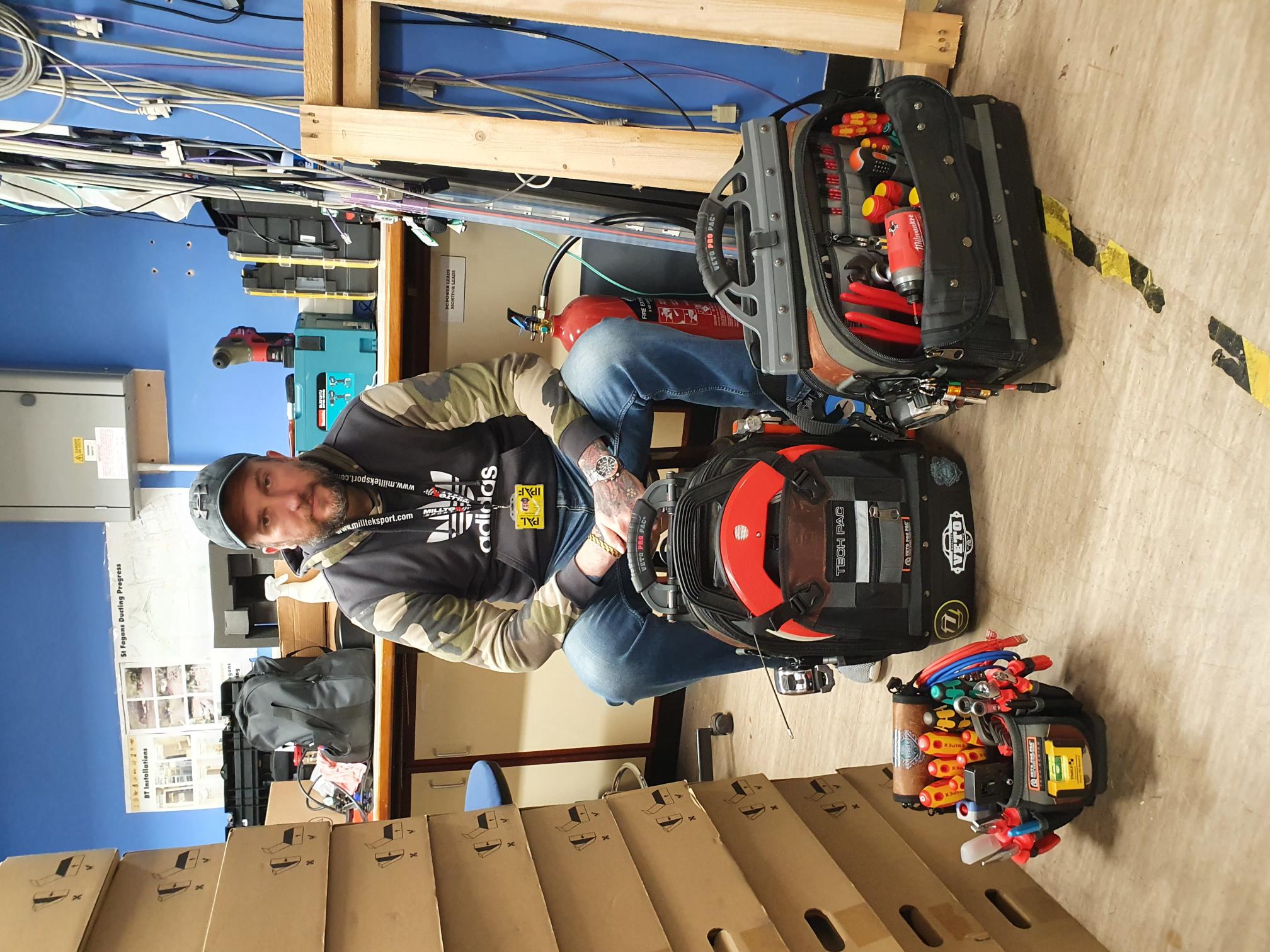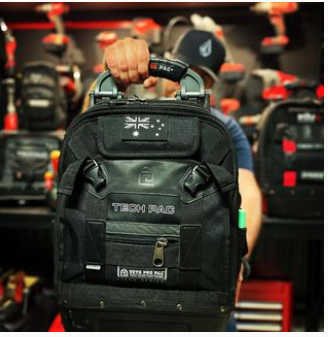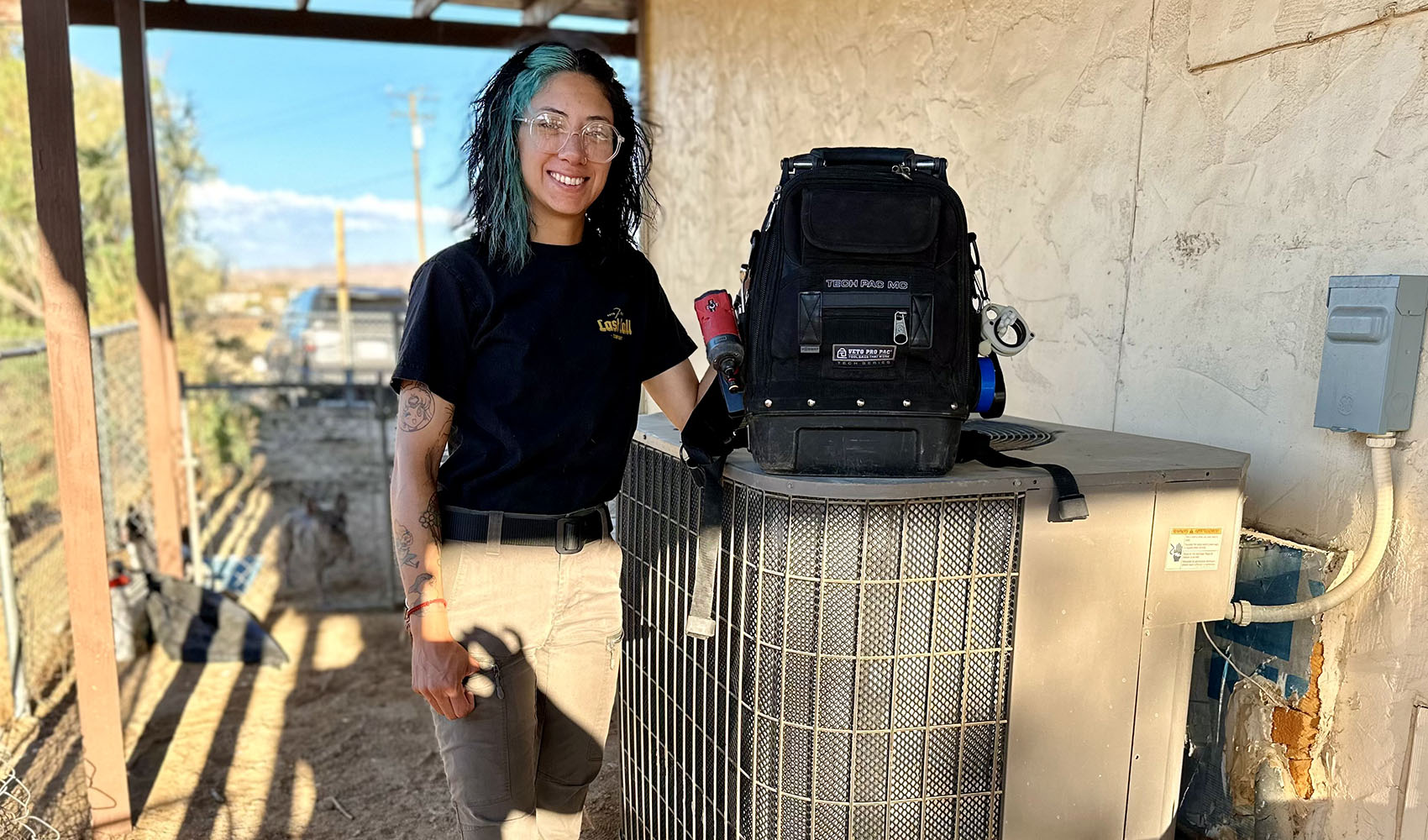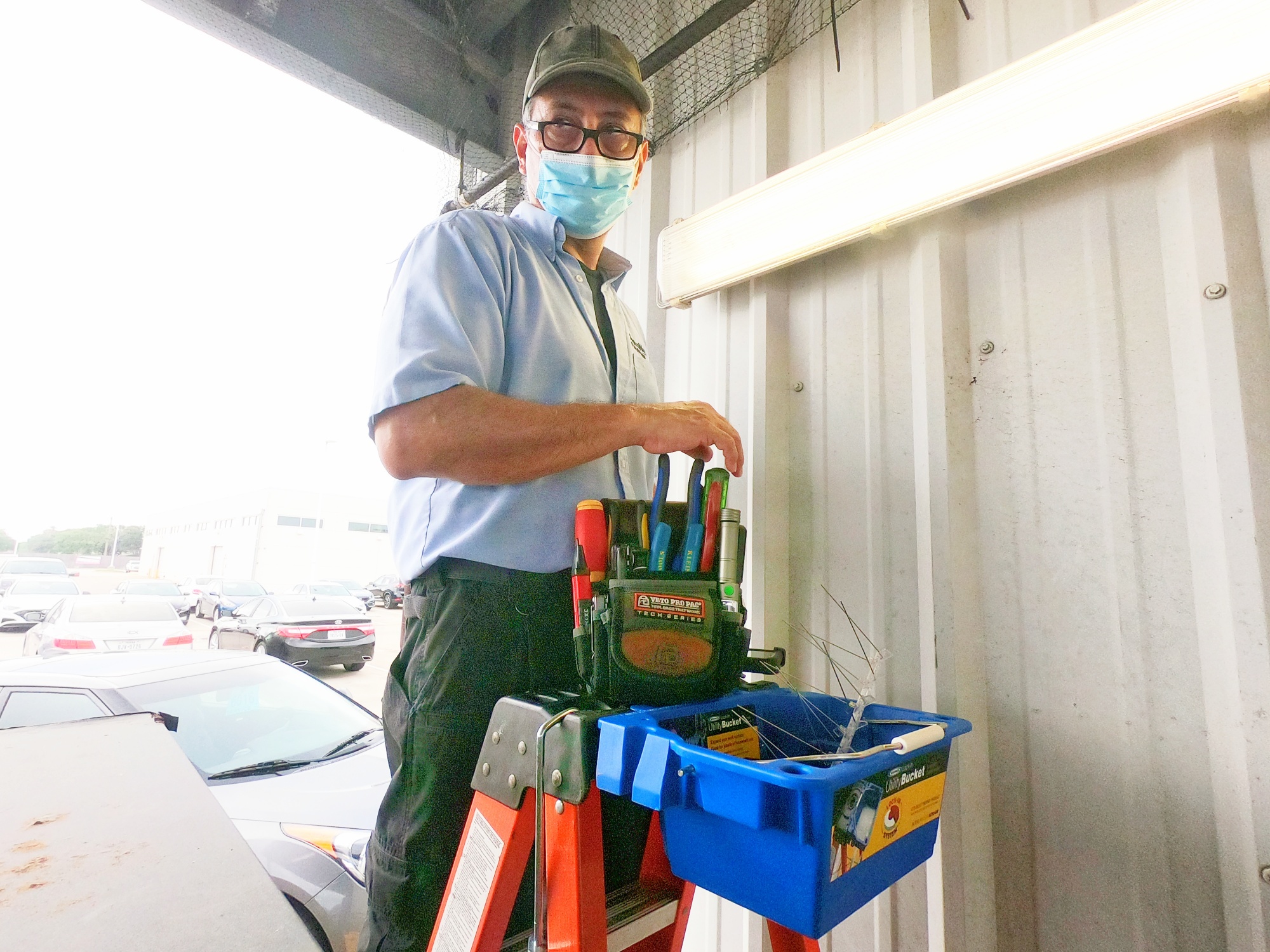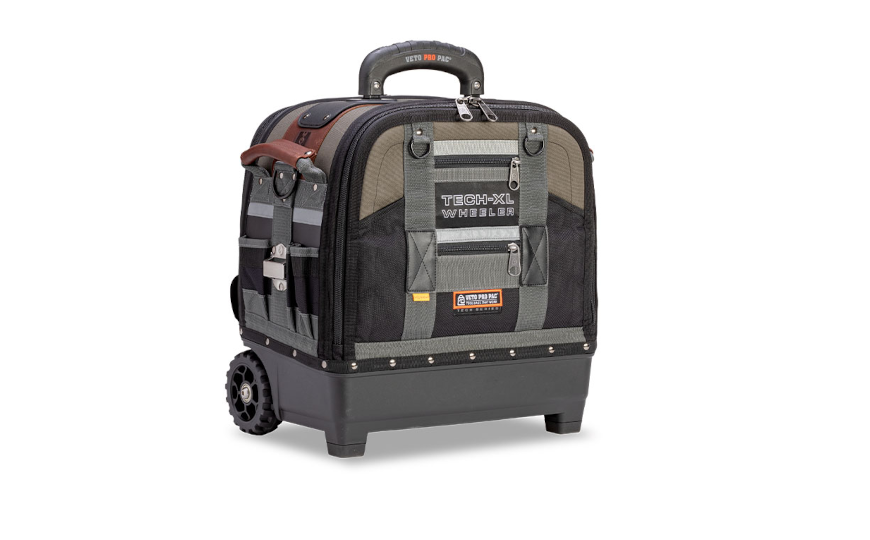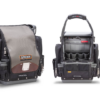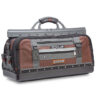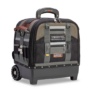As we stand on the cusp of a new era in the trades, it’s exciting to imagine how our most essential equipment will evolve. Tool bags, the unsung heroes of every job site, are poised for a revolution. Let’s look at possible cutting-edge innovations and futuristic concepts that could reshape the way we carry, organize, and interact with our tools. From smart technology integration to sustainable materials, let’s dive into the future of tool bags.
1. Smart Technology Integration
The integration of smart technology into tool bags is perhaps the most transformative trend on the horizon. Here are some innovations we might see:
a) IoT-Enabled Inventory Management:
Imagine a tool bag that knows its contents at all times. Using RFID (Radio-Frequency Identification) or NFC (Near Field Communication) technology, future tool bags could track every item placed inside them. This would allow tradespeople to:
- Quickly check if they have all the necessary tools before leaving for a job
- Locate misplaced tools within the bag using a smartphone app
- Receive alerts if tools are left behind at a job site
b) Built-in Diagnostic Tools:
Tool bags of the future might come equipped with built-in diagnostic tools. For example, an electrician’s bag could include a voltage tester or a multimeter integrated into its structure, reducing the number of separate devices needed.
c) Augmented Reality (AR) Interfaces:
AR could revolutionize how we interact with our tool bags. Picture putting on a pair of AR glasses and seeing a virtual overlay of your bag’s contents, with each tool’s location highlighted. This technology could also provide real-time information about each tool, such as battery life for power tools or maintenance schedules.
2. Advanced Materials and Construction
The materials used in tool bag construction will likely see significant advancements:
a) Self-Healing Fabrics:
Researchers are developing fabrics that can repair themselves when torn or punctured. These materials could greatly extend the lifespan of tool bags, making them more durable and cost-effective in the long run.
b) Shape-Memory Polymers:
These smart materials can change shape in response to stimuli like temperature or electrical current. In tool bags, this could lead to compartments that expand or contract based on their contents, maximizing space efficiency.
c) Graphene-Enhanced Composites:
Graphene, a material known for its strength and lightness, could be incorporated into tool bag fabrics. This would result in bags that are incredibly strong yet lightweight, reducing strain on the user.
3. Ergonomic Advancements
As the importance of workplace health and safety continues to grow, we can expect significant developments in ergonomic design:
a) Exoskeleton Integration:
Future tool bags might incorporate lightweight exoskeleton technology to assist in lifting and carrying heavy loads. This could help prevent back injuries and reduce fatigue during long workdays.
b) Smart Weight Distribution:
Using sensors and motorized components, future bags could automatically adjust their weight distribution based on the user’s movements and posture, providing optimal comfort and reducing strain.
c) Customizable Ergonomics:
Advanced 3D scanning and printing technologies could allow for tool bags to be custom-fitted to each user’s body, providing personalized ergonomic support.
4. Sustainability and Eco-Friendly Design
As environmental concerns become increasingly pressing, tool bag manufacturers will likely focus more on sustainable practices:
a) Biodegradable Materials:
We may see the development of high-performance, durable materials that are also biodegradable, reducing the environmental impact of discarded bags.
b) Recycled and Upcycled Components:
Future tool bags might be made entirely from recycled materials, including plastics recovered from the ocean or upcycled industrial waste.
c) Solar-Powered Features:
Integrating flexible solar panels into the exterior of tool bags could provide a renewable energy source for charging tools and smart features.
5. Modular and Adaptable Designs
The one-size-fits-all approach to tool bags may become a thing of the past:
a) Magnetic Modular Systems:
Imagine a tool bag composed of individual modules that can be easily attached or detached using strong magnets. This would allow tradespeople to customize their bag’s configuration for each job.
b) Shape-Shifting Bags:
Using advanced materials and smart design, future tool bags might be able to change their shape and size. A compact bag for service calls could expand into a larger version for bigger jobs.
c) 3D-Printed Customization:
On-demand 3D printing could allow users to design and produce custom compartments or accessories for their tool bags, tailored to specific tools or job requirements.
6. Enhanced Safety Features
Safety will continue to be a top priority in tool bag design:
a) Built-in Lighting Systems:
Future tool bags might feature integrated LED lighting systems that automatically illuminate the bag’s interior and the surrounding work area in low-light conditions.
b) Emergency Beacons:
For professionals working in remote or dangerous areas, tool bags could be equipped with emergency beacons or GPS trackers to aid in location and rescue efforts if needed.
c) Anti-Theft Technology:
Advanced locking mechanisms, alarm systems, and GPS tracking could be integrated to protect valuable tools from theft.
7. Health and Wellness Integration
As the line between personal and professional life continues to blur, tool bags might start incorporating features to support overall health and wellness:
a) Hydration Reminders:
Built-in sensors could monitor the user’s hydration levels and provide reminders to drink water, especially in hot working conditions.
b) Posture Monitoring:
Integrated sensors could analyze the user’s posture while carrying the bag and provide feedback to prevent strain and injury.
c) Air Quality Sensors:
For professionals working in potentially hazardous environments, tool bags could be equipped with sensors to detect air quality issues and alert the user to dangerous conditions.
8. Artificial Intelligence and Machine Learning
The integration of AI and machine learning could lead to tool bags that learn and adapt to their users’ needs:
a) Predictive Tool Suggestions:
By analyzing patterns in tool usage, an AI-equipped bag could suggest which tools might be needed for upcoming jobs, helping to prevent forgotten equipment.
b) Automated Maintenance Schedules:
AI systems could track tool usage and condition, automatically generating maintenance schedules and reminders to ensure tools are always in top working order.
c) Job-Specific Configurations:
Machine learning algorithms could analyze past jobs and automatically suggest the most efficient bag configuration for upcoming tasks.
Conclusion
The future of tool bags is bright, filled with possibilities that blend cutting-edge technology with practical functionality. From smart, connected bags that manage our inventory to sustainable designs that minimize environmental impact, the innovations on the horizon promise to make our work easier, safer, and more efficient.
As these advancements unfold, it’s important to remember that the core purpose of a tool bag remains unchanged – to help tradespeople carry and organize their essential equipment effectively. The best innovations will be those that enhance this fundamental purpose while adapting to the changing needs of modern trades.
For professionals in any field, staying informed about these developments and being open to adopting new technologies can lead to increased productivity and job satisfaction. The tool bag of the future isn’t just a carrier – it’s a smart assistant, a safety device, and a key component of the modern tradesperson’s arsenal.
As we look forward to these exciting developments, one thing is certain: the humble tool bag is set to become one of the most high-tech items on the job site. The future of our trades is in the bag – quite literally!
See: The Best Wheeled Tool Bags
Frequently Asked Questions (FAQs)
1. When can we expect to see some of these futuristic features in tool bags?
Some features, like basic smart technology integration and advanced materials, are already beginning to appear in high-end tool bags. More complex innovations like AI integration and shape-shifting designs may still be several years away from widespread commercial availability.
2. Will these high-tech tool bags be affordable for the average tradesperson?
Initially, bags with advanced features will likely come at a premium price. However, as with most technologies, prices are expected to decrease over time as the innovations become more widespread and manufacturing processes improve.
3. How will battery life be managed for smart tool bags?
Future smart tool bags will likely use a combination of energy-efficient components, solar charging, and possibly even kinetic energy harvesting (converting movement into electrical energy) to manage power needs. Some may also be designed to draw power from the tools they carry.
4. Will traditional, non-tech tool bags become obsolete?
It’s unlikely that traditional tool bags will disappear entirely. There will likely always be a market for simple, reliable designs. However, we may see a shift towards more tech-integrated options as their benefits become more apparent and prices become more competitive.
5. How will these smart tool bags handle data privacy and security?
As with any smart device, data privacy and security will be crucial considerations. Manufacturers will need to implement robust security measures to protect user data and prevent unauthorized access to tool inventory information.
6. Can these future tool bags be repaired if they malfunction?
Repairability will likely be a key consideration in the design of future tool bags, especially given the increasing focus on sustainability. However, as with many high-tech devices, some repairs may need to be carried out by specialized technicians.
7. How will these innovations impact job site productivity?
These advancements are expected to significantly boost productivity by reducing time spent searching for tools, preventing forgotten equipment, and minimizing physical strain. The exact impact will vary depending on the specific features and how they’re utilized.






